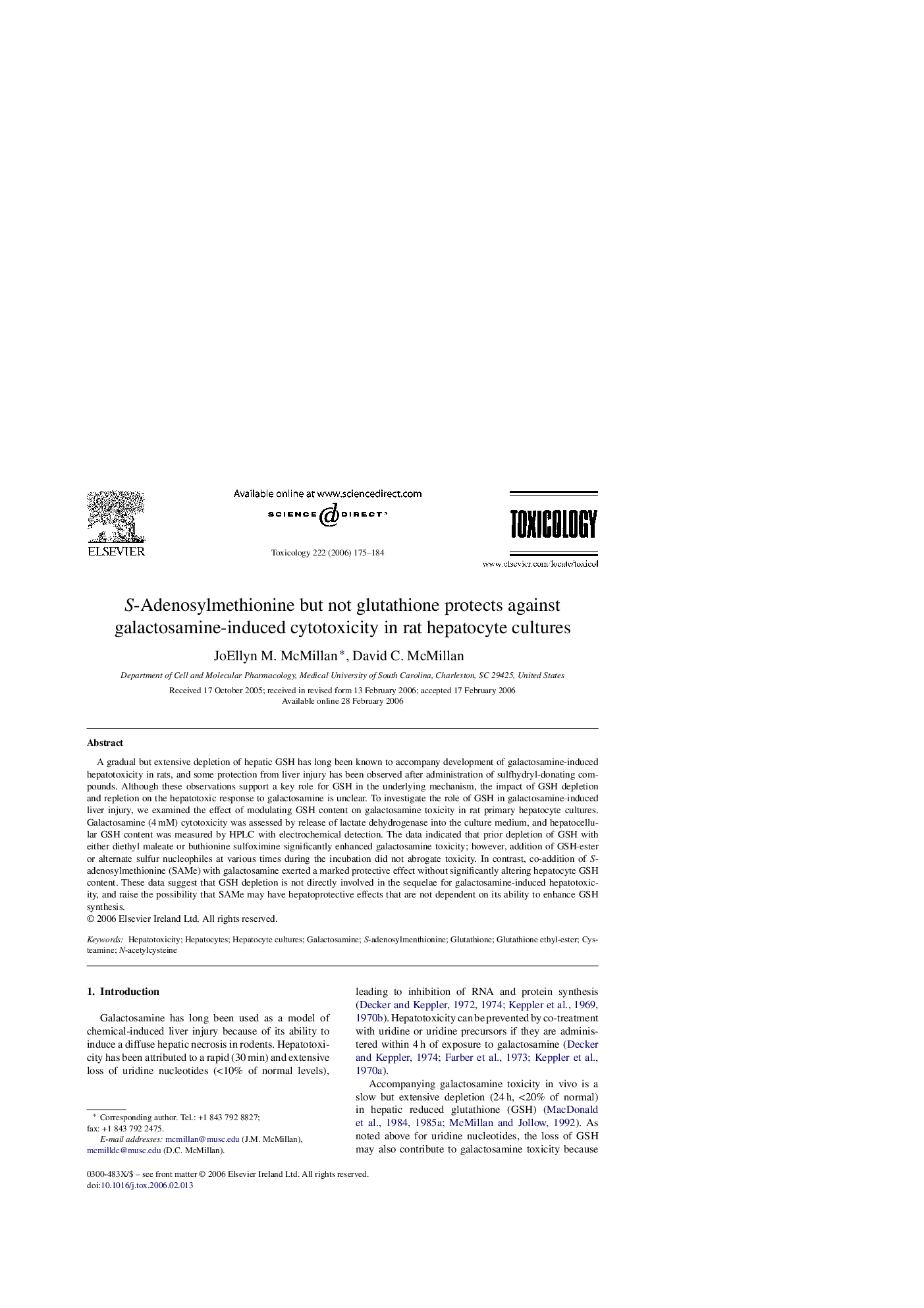| Article ID | Journal | Published Year | Pages | File Type |
|---|---|---|---|---|
| 2597845 | Toxicology | 2006 | 10 Pages |
Abstract
A gradual but extensive depletion of hepatic GSH has long been known to accompany development of galactosamine-induced hepatotoxicity in rats, and some protection from liver injury has been observed after administration of sulfhydryl-donating compounds. Although these observations support a key role for GSH in the underlying mechanism, the impact of GSH depletion and repletion on the hepatotoxic response to galactosamine is unclear. To investigate the role of GSH in galactosamine-induced liver injury, we examined the effect of modulating GSH content on galactosamine toxicity in rat primary hepatocyte cultures. Galactosamine (4Â mM) cytotoxicity was assessed by release of lactate dehydrogenase into the culture medium, and hepatocellular GSH content was measured by HPLC with electrochemical detection. The data indicated that prior depletion of GSH with either diethyl maleate or buthionine sulfoximine significantly enhanced galactosamine toxicity; however, addition of GSH-ester or alternate sulfur nucleophiles at various times during the incubation did not abrogate toxicity. In contrast, co-addition of S-adenosylmethionine (SAMe) with galactosamine exerted a marked protective effect without significantly altering hepatocyte GSH content. These data suggest that GSH depletion is not directly involved in the sequelae for galactosamine-induced hepatotoxicity, and raise the possibility that SAMe may have hepatoprotective effects that are not dependent on its ability to enhance GSH synthesis.
Keywords
Related Topics
Life Sciences
Environmental Science
Health, Toxicology and Mutagenesis
Authors
JoEllyn M. McMillan, David C. McMillan,
